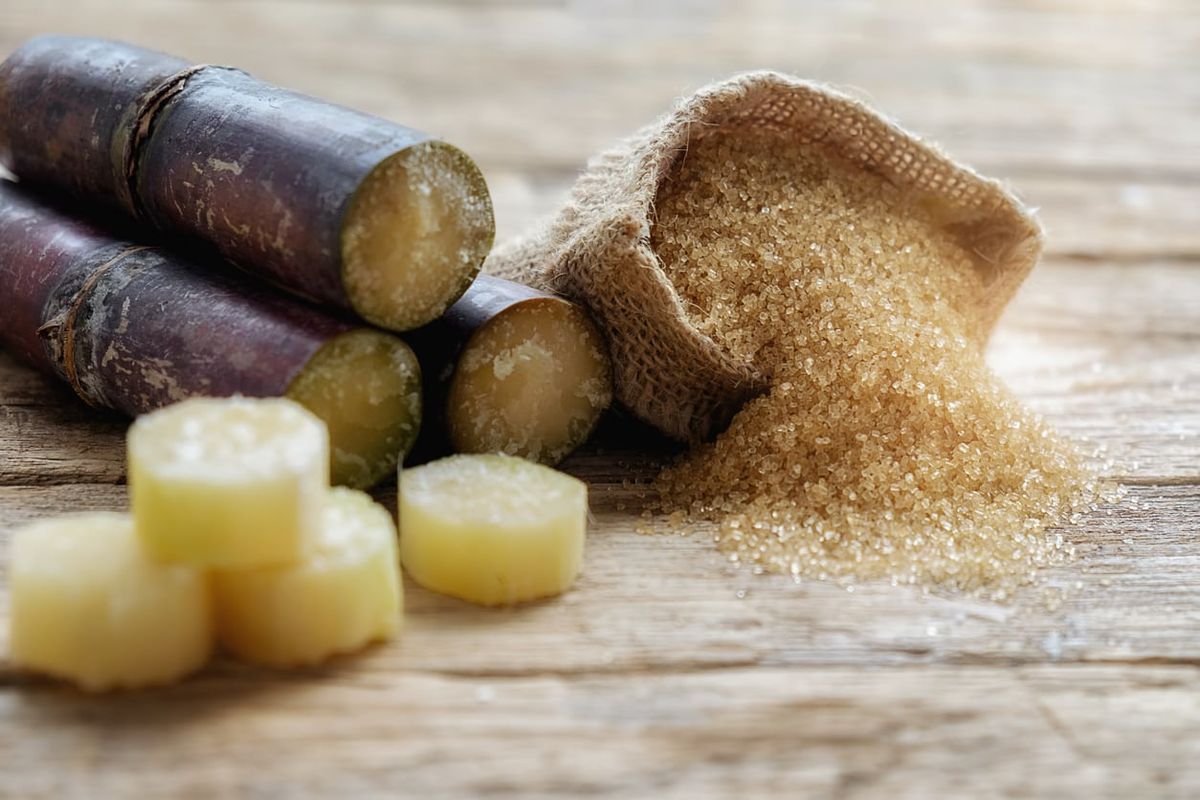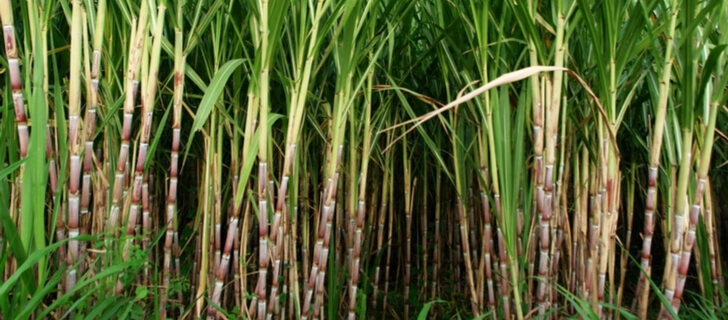Everything About Sugar Canes: What Are Sugar Canes Made Use Of For and Their Duty in International Farming?
Sugar canes offer as a cornerstone of global farming, mainly acknowledged for their role in sugar production. They additionally contribute to the development of byproducts like molasses and ethanol. These facets not only sustain different industries however additionally effect economic security in country regions. However, the farming of sugar walking canes encounters substantial ecological difficulties. Understanding their complex function triggers further expedition into their agricultural practices and sustainability efforts.
The Agricultural Process of Sugar Walking Stick Cultivation
Although sugar cane cultivation might vary by region, the basic agricultural procedure stays constant. The very first step entails choosing high-yielding ranges ideal for neighborhood environments. Prep work of the soil is necessary, frequently requiring husbandry and the addition of plant foods to enhance fertility. Planting usually takes place throughout the stormy season, with farmers making use of either entire stalks or cuttings to develop new crops.As the plants grow, they require persistent care, consisting of weed control, bug administration, and watering, relying on the ecological conditions. Farmers check the sugar cane's development cycle, which typically covers 10 to 24 months, prior to harvesting. Gathering is labor-intensive, often carried out manually or with specialized equipment, guaranteeing marginal damages to the stalks. Complying with harvest, the walking cane is carried to processing centers. This precise cultivation process not just supports local economic climates however additionally plays a significant duty in international farming practices, adding to food and power supplies.
Sugar Manufacturing: From Cane to Crystal
The trip of sugar production starts the moment newly gathered sugar walking stick reaches processing facilities. The very first step involves cleaning and chopping the walking cane to prepare it for removal. Using high-pressure rollers, the juice is drawn out from the crushed walking stick, causing a sweet fluid referred to as sugarcane juice. This juice undertakes information, where impurities are gotten rid of with the addition of lime and heat.Next, the cleared up juice is focused by steaming it down to develop a thick syrup. This syrup is then crystallized by cooling down, making it possible for sugar crystals to form. The crystallized sugar is divided from the continuing to be syrup, referred to as molasses, via centrifugation.Finally, the sugar crystals are washed and dried, resulting in the acquainted granulated sugar (What Are Sugar Canes Used For). This process transforms raw sugar walking stick right into a product that is integral to various cooking and industrial applications, highlighting the relevance of sugar in international farming
Biofuels and Sugar Canes: A Lasting Future
As the globe increasingly looks for lasting power services, sugar canes have become an encouraging resource for biofuels. The biomass originated from sugar canes can be exchanged ethanol, a renewable gas option that noticeably reduces greenhouse gas discharges compared to fossil gas. This process not just provides a cleaner energy source yet additionally promotes energy freedom for lots of countries.In enhancement, sugar walking stick farming sustains rural economic situations by creating jobs in both farming and biofuel manufacturing markets. Using sugar canes for biofuel production also encourages agricultural diversity, which can improve soil health and reduce reliance on solitary plants. The by-products of sugar walking cane processing can be made use of for electricity generation, in addition adding to a sustainable power cycle. As nations endeavor to meet renewable resource targets, sugar canes are poised to play a crucial duty fit a more sustainable future in the biofuel landscape.

The Role of Sugar Canes in Drink Production
Sugar walking sticks play a substantial role in beverage manufacturing, acting as a primary active ingredient in rum and adding to the sweet taste of several soft drinks. In addition, their natural juices are utilized in numerous beverages, improving flavor and allure. This convenience emphasizes the relevance of sugar walking canes in the worldwide drink market.
Sugar Walking Cane in Rum
Rum manufacturing is intricately linked to the farming of sugar cane, an essential crop that gives the required fermentable sugars required for fermentation. This procedure begins with the removal of juice from gathered sugar walking sticks, which is after that either fermented directly or refined into molasses. Yeast is added to transform the sugars into alcohol, causing a diverse range of rum styles, from light to dark selections. The geographical area where the sugar cane is grown substantially affects the flavor profile of the rum, with variables such as soil kind and climate playing important duties. Countries like Barbados, Jamaica, and Cuba are renowned for their rum manufacturing, mirroring the social and historical importance of sugar walking stick within the international drink market.
Soft Drinks Sugar Resource

All-natural Juice Manufacturing Makes Use Of
In enhancement to its considerable role in soda production, sugar walking cane is also essential in the all-natural juice sector. The juice drawn out from sugar walking cane, recognized as walking stick juice, is celebrated for its natural sweet taste and unique flavor profile. This juice is commonly eaten fresh in various areas, specifically in exotic nations, where it is taken pleasure in as a revitalizing beverage. In addition, walking stick juice acts as a base active ingredient in a variety of all-natural fruit juices and smoothie mixes, enhancing both preference and nutritional worth. Its site here all-natural buildings make it an eye-catching choice to artificial sugar, interesting health-conscious customers. Overall, sugar walking stick's convenience in juice production highlights its value in modern-day beverage offerings worldwide.
Advancements in Sugar Walking Stick Byproducts
Developments in sugar walking stick byproducts are leading the way for sustainable options in various industries. Biofuels acquired from sugar cane offer an alternative power source, while innovations in lasting packaging are decreasing reliance website link on standard materials. These developments highlight the versatility and possibility of sugar walking cane past its key usage in beverage manufacturing.
Biofuels From Sugar Walking Cane
Just how can the byproducts of sugar cane add to lasting energy services? The conversion of sugar walking cane right into biofuels presents an appealing opportunity for eco-friendly energy. By utilizing the fibrous deposit, recognized as bagasse, producers can create bioethanol via fermentation procedures. This bioethanol can work as a lasting choice to fossil gas, decreasing greenhouse gas exhausts and reliance on non-renewable resources. In addition, molasses, one more byproduct, can be fermented to generate biofuels, making best use of source performance. The power generated from sugar cane not only offers a cleaner fuel source but also enhances the general economic feasibility of sugar manufacturing. By incorporating biofuel manufacturing into their operations, sugar cane industries can play an essential role ahead of time lasting power options internationally.
Lasting Product Packaging Solutions
Sustainable packaging services are significantly being established from sugar walking stick byproducts, showcasing the flexibility of this agricultural staple. Innovations such as biodegradable plastics stemmed from bagasse, the fibrous deposit left after juice extraction, are acquiring traction. These products offer an environment-friendly alternative to conventional plastics, reducing reliance on fossil gas and decreasing carbon footprints. Additionally, sugar cane-based product packaging is compostable, breaking down normally without hurting the setting. Business are currently checking out these options to straighten with consumer demand for sustainability. As recognition of plastic air pollution grows, the fostering of sugar cane-derived packaging is anticipated to increase, positioning sugar canes as a principal in the change to greener packaging remedies in different sectors.
Economic Effect of Sugar Walking Cane Farming

Sugar walking stick farming has deep origins in several economies, its financial influence expands far beyond farming manufacturing. This crop serves as a significant income source for countless farmers worldwide, specifically in developing nations where farming is a key livelihood. Sugar walking stick adds to regional economies via work creation in processing, harvesting, and farming. The industry likewise stimulates development in related sectors such as transport, tools production, and food processing.Furthermore, sugar cane is an essential player in international trade, influencing global markets and prices. Countries that produce sugar cane typically depend on exports to improve their economic security. The byproducts of sugar cane, such as ethanol and molasses, diversify earnings streams for farmers and add worth to the agricultural sector. On the whole, the financial implications of sugar walking stick farming are profound, impacting not only farmers yet additionally national economies and whole areas.
Environmental Factors To Consider in Sugar Walking Stick Farming
While sugar walking stick farming plays a necessary role in several economic climates, it additionally increases substantial environmental problems that can not be forgotten. The comprehensive use of plant foods and chemicals in sugar walking stick farming usually results in soil destruction and water contamination. Overflow from these chemicals can contaminate close-by water bodies, damaging water ecosystems. Furthermore, the monoculture practices common in sugar walking cane farming decrease biodiversity, making ecological communities a lot more at risk to bugs and diseases.Deforestation is an additional crucial issue, as land is frequently removed to give way for sugar haciendas, causing environment loss for wildlife and enhanced carbon exhausts. The high water intake needed for sugar walking cane watering can stress local water sources, specifically in arid regions. As global demand for sugar remains to rise, attending to these ecological difficulties ends up being critical to ensure sustainable methods in sugar cane farming.
Regularly Asked Inquiries
What Are the Nutritional Conveniences of Sugar Walking Cane?
The dietary advantages of sugar walking stick primarily include its high carb web content, giving energy. In addition, it has vitamins, minerals, and antioxidants that might sustain overall health and wellness, though small amounts is vital due to its sugar content.
How Does Sugar Walking Stick Affect Resident Ecosystems?
Sugar walking cane farming can greatly impact regional environments by altering land usage, influencing biodiversity, find this and calling for substantial water sources. Furthermore, it may bring about soil degradation and pesticide drainage, interfering with surrounding habitats and wild animals populations.
What Is the Background of Sugar Walking Stick Cultivation?

Exist Alternatives to Sugar Walking Stick for Sugar Manufacturing?
Alternatives to sugar walking stick for sugar manufacturing consist of sugar beets, corn, and various tropical plants like sorghum and agave (What Are Sugar Canes Used For). These crops offer varied sources of sweetness, each with distinctive growing requirements and ecological effects
How Do Weather Patterns Impact Sugar Walking Stick Returns?
Weather condition patterns considerably influence sugar cane returns via temperature variations, rainfall quantities, and seasonal cycles. Drought or too much rainfall can impede development, while suitable conditions improve photosynthesis, eventually affecting the amount and quality of the harvest. The journey of sugar production begins the minute freshly collected sugar cane gets here at processing facilities. The taken shape sugar is separated from the remaining syrup, recognized as molasses, through centrifugation.Finally, the sugar crystals are cleaned and dried out, resulting in the familiar granulated sugar. Rum production is delicately linked to the growing of sugar walking cane, a crucial crop that supplies the necessary fermentable sugars needed for fermentation. Furthermore, the monoculture techniques widespread in sugar walking cane farming reduce biodiversity, making ecological communities more vulnerable to insects and diseases.Deforestation is one more important issue, as land is commonly gotten rid of to make means for sugar plantations, leading to habitat loss for wildlife and increased carbon emissions. Alternatives to sugar cane for sugar production include sugar beets, corn, and various exotic plants like sorghum and agave.